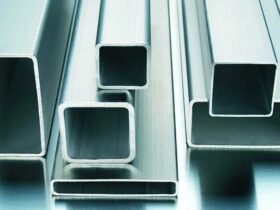Article views: 11
The fact that a hatchback car, and not a sedan or station wagon, as was usually customary, became positioned as a representative car, was completely atypical for the automakers of the BMW concern, whose next brainchild, the 3 Series GT car, was to be tested..
The subject of testing of this novelty was both an assessment of the interior of the machine in conjunction with ergonomics, and the study of its dynamic performance..
First of all, attention is drawn to the overall dimensions of the new model, which are several centimeters superior to their «colleagues» created in sedan and station wagon bodies. Thanks to the increased size, the car has become much more spacious, especially in the back seat, where the influence of the actions in front of the person sitting in front is not felt at all, even when he moves his seat all the way back. However, the rear seat also has a backrest adjustment, allowing you to store additional luggage in the rear compartment. Another thing is that the space for its adjustment is mostly displaced forward, and unfortunately, it is impossible to lean back too much..
In addition to dimensions, the BMW GT 3 Series hatchback increases the boot volume by 25 liters, which, together with the improved ability of the rear seats to transform into a flat plane, provides maximum convenience when transporting bulky goods..
The ergonomics of the cabin as a whole can be considered successful if you close your eyes to some insignificant details (for example, to the dashboard, on which emergency warning lamps are located in the upper part, while the main working elements of the backlight, which should light up and signal the operating modes of the machine constantly, on the contrary, shifted to the very bottom).
The change in size also affected such an important part as the fuel tank, which has become larger by 3 liters. And this is no coincidence — in the design process, the need to power a three-liter turbine engine was taken into account, the power of which, depending on the modification, can reach 303 hp, and to provide the greatest power reserve for one refueling. Noteworthy is such a feature as the practical absence of a difference in the behavior of the car between the weakest and most powerful modifications of power units when testing the car in dynamics.
The systems of the car are so balanced inside that they practically negate possible negative sensations during driving, including the seemingly obvious lack of power. On the one hand, it’s all about the elasticity of the BMW engines, capable of adapting to various operating conditions. On the other hand, an automatic transmission, represented by 8 steps, adjusting to the selected driving mode, also has its effect on smoothing the above difference in the characteristics of the motors.
Indeed, in order for the sensations when driving a car with engines of different powers to be the same, the boxes have to choose different gear ratios, and the driver does not even need to know which ones. But it is noteworthy that the most optimal behavior of the car (regardless of how powerful its power unit is) was noted if the gearbox operates in sport mode..
The suspension of the new BMW hatchback is also made quite organically in the sense that when choosing a movement, taking into account the state of the road surface, it is able to adapt to the corresponding mode. The specified advantage is ensured by the adaptive dampers installed on the BMW GT, which, moreover, exclude excessive roll of the car in corners. True, during the test drive, it was noted that the car passed through individual large potholes with excessive rigidity, which, however, is not so critical compared to the mass of other advantages of the car..
The car’s control system also shows itself from the best side, as if forgiving the driver the flaws of rough steering and clearly maintaining the main trajectory even at the maximum possible speed.
Similar articles











